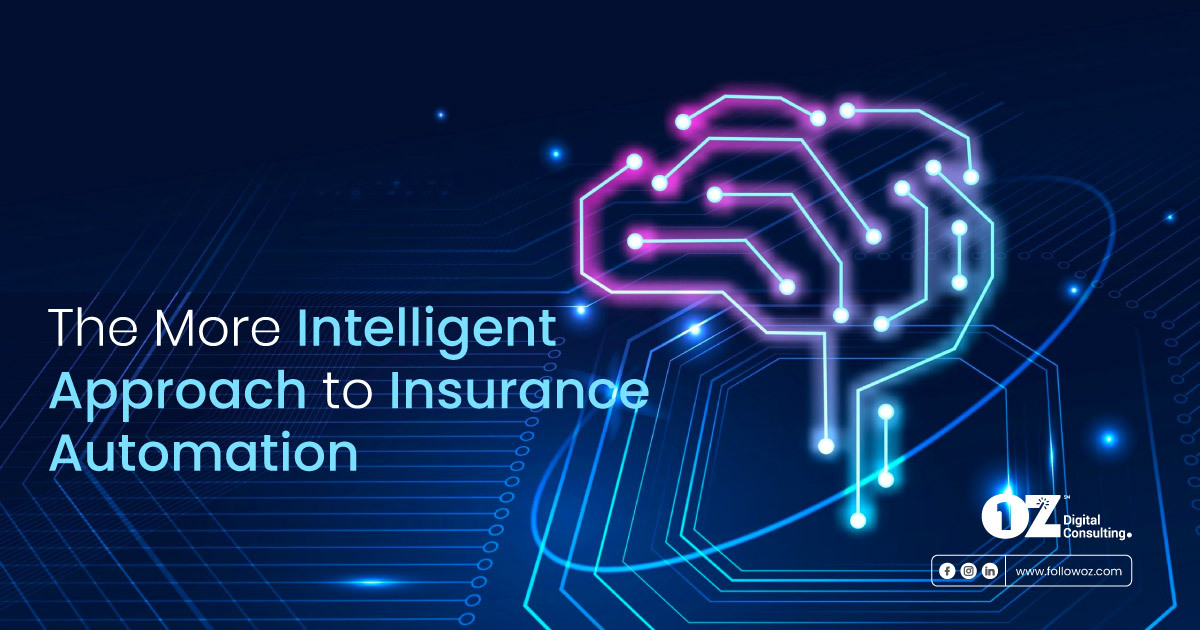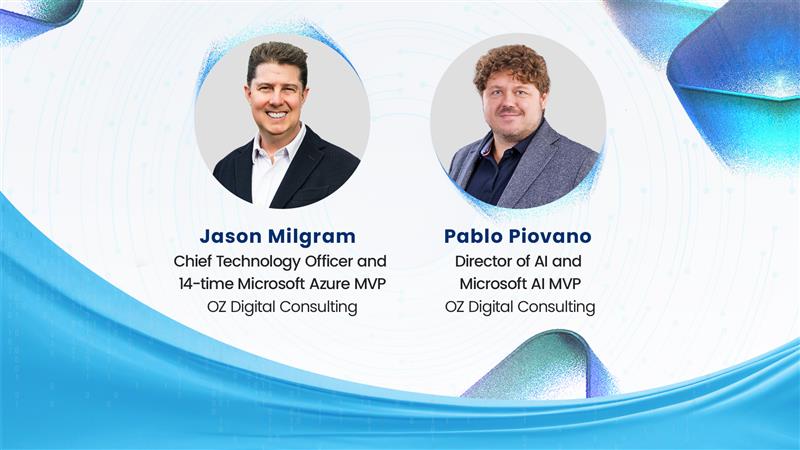Cost reduction remains a priority for most organizations. Most businesses historically have sought out automation to improve efficiency while reducing costs. So, it’s no surprise that Robotic Process Automation (RPA) continues to be the enterprise automation tool of choice. But as digital transformation initiatives mature, the focus usually shifts to automating more complex, end-to-end processes. Here’s where RPA—while it helps improve efficiency—fails as it lacks the flexibility to grow with the business or evolve as processes change.
As soon as a process changes, the automation breaks, requiring constant testing and rebuilding of bots. According to a September 2022 report from HFS Research2, the shelf life of an RPA bot is between 9-18 months, after which system and process changes require a rework or become redundant.
Why You Should Not Rely on RPA Alone
Unstructured Data
One of the biggest drawbacks of RPA is its inability to handle unstructured data. According to Gartner, unstructured data accounts for as much as 80% of an enterprise’s total data. Since RPA relies on rules and a template-based approach, it cannot handle the unpredictability and high variability of most unstructured formats like contracts, images, video, voice, and text. Unstructured documents do not have predefined or predictable fields to extract information. What this means for carriers who deploy only RPA automation is that 80% of their data remains trapped in documents and content types that their automation solution can’t read.
Limited Insights
Unstructured data provides insights carriers can use to improve operations and make better decisions. However, if RPA cannot process this data, organizations may miss out on these insights, limiting their ability to innovate and adapt.
Poor Scalability
As an organization grows, so does the volume of unstructured data. RPA’s inability to automate processes involving unstructured data can significantly impact a carrier’s ability to operate efficiently, respond to changing market conditions, and glean valuable insights, leading to less-than-optimal results.
Why You Need Intelligent Automation
The insurance industry is inundated with data. To harness all this data, carriers need the right tools. It would mean empowering employees with Artificial Intelligence (AI) tools and putting automation at the center of the operating model.
Why is it so important?
– McKinsey predicts that over half of claims activities will be automated by 2030.
– Bain says automation and AI-related technologies will result in 50% lower operating expenses for insurance companies.
– According to an Accenture report, “only 10% of insurers fall into the future-ready category of operational maturity.”
The insurance industry will have to brace itself for this paradigm shift.
Customer service, underwriting, billing, payments, claims, and many other business-as-usual functions will not look anything like the insurance operations of the past. Those who act quickly and transform their operations will outdo their competitors, and what is a competitive advantage today will be table stakes tomorrow.
What Is Intelligent Automation?
Intelligent automation uses automation technologies like Robotic Process Automation (RPA) in conjunction with Artificial Intelligence (AI), machine learning, data and analytics to create efficient, end-to-end business processes. Unlike traditional RPA, intelligent automation can automate all processes, including non-repetitive tasks, which previously were unthinkable without human intervention.
Intelligent Automation Opportunities Across Insurance Operations
Here are the insurance functions with the most potential for intelligent automation:
- Underwriting
For decades, underwriters relied solely on historical data to assess risk and determine coverage. But in today’s rapidly changing world, historical data is no longer enough.To stay competitive, underwriters must leverage AI and ML to unlock deep insights from both structured and unstructured data. These technologies allow underwriters to identify risks earlier, price policies smarter, and operate more efficiently.With intelligent automation, underwriters can reduce costs, improve customer satisfaction, and adapt to changes faster. Bots can pull information — everything from profiles, past policies, claims, and future-ready data like telemetrics—into one unified 360-degree view of the customer, helping underwriters focus on analyzing policies over data collection. Used together, AI and ML technologies can replicate underwriter expertise at scale in numerous areas:
-
- Data Collection: Collect diverse data from both structured and unstructured sources to gain a comprehensive view of risk factors. By incorporating real-time data from multiple channels, underwriters can stay on top of emerging exposures.
- Insights: Generate insights from large volumes of data quickly using AI and machine learning. By detecting patterns and correlations, underwriters can better predict potential losses and model risks.
- Risk Selection: Make informed risk selection and pricing decisions tailored to specific cases using granular, AI-enhanced metrics. Automated risk rating incorporates more variables for more accurate coverage and premiums.
- Automating Workflows: Streamline routine tasks like application processing and renewals with conversational AI chatbots. Automating high-volume, repetitive workflows improves underwriter productivity and customer satisfaction.
- Behavioral Analysis: Identify potential misrepresentation and fraud earlier using AI-enabled behavioral analysis techniques. Advanced analytics improve underwriting accuracy and efficiency from the initial review stage.
- Claims Management
A claim is the “moment of truth” that makes or breaks the customer experience. It’s perhaps the only time an insurer interacts with the customer. But though customers want — and expect — faster service, insurers must also verify the claim isn’t fraudulent, which drives up the cost of oversight and governance.Intelligent automation can prevent claims leakage with timely insights. And reduce the incidence of fraud by automating checks on every claim.An intelligent system for insurance claims can provide image/video intelligence for damage assessment and validation with claims inspection and investigation integration. Using artificial intelligence, the solution can detect fraudulent reporting by analyzing images and integrating unstructured data and other data sources to build an accurate risk profile. Additionally, P&C insurers can integrate historical data into self-learning analytics models within the claims process to augment and improve claims handler assessments.
Intelligent Automation claims solutions simplify the entire claims-handling process by automating most claim-handling steps through full automation, cognitive/augmented intelligence (discovery and mining), or digital data decision (data science) interactions.
By adding these newer automation technologies to the claims handling process, the solution improves efficiencies in the following process areas: claims submission, claims adjustment, verification, claims recovery, automated damage assessment, and fraud detection and subrogation, all of which are critical components in the claims handling process.
It is believed that over three-quarters of the claims filing process benefits from automation or AI, significantly decreasing the time to claim settlement for many customers.
- Customer Experience
It’s becoming increasingly hard for P&C carriers to retain customers and create differentiation. Perhaps the only time carriers interact with customers is during the filing of a claim (car accident, home damage). The lack of continuous customer engagement puts more pressure on the carrier to make every interaction count.One way to increase customer interactions outside the claim filing process is by providing proactive notifications that potentially avoid events in the first place and the subsequent filing of a claim.An intelligent automation solution can alert customers of potential events in their area. For example, customers can be notified ahead of a storm by customizing and integrating external APIs like weather and maps.
- Payments and Invoicing
Carriers can reduce manual billing touchpoints by automating payments and reconciliation. Many insurers find they can better simplify billing challenges for customers and employees through intelligent automation, processing invoices automatically, maintaining clear billing histories, and resolving billing disputes quickly. Payments and premium remittances are managed more accurately, with minimal employee oversight. - Document Processing
Carriers, on average, receive anywhere from 2,600 to 4,000 documents per day, which they must process according to regulatory guidelines. According to IDC Research, over half of the documents needing processing are digital files containing unstructured information — emails, attachments, SMS, PDF, PNG, etc.Fortunately, newer AI-enabled technologies have paved the way for intelligent document processing (IDP) to handle the influx of unstructured information.An intelligent document processing tool can automate claims processing of the First Notice of Loss (FNOL), including the document review process, extraction of key data points, and setting up the claim in a P&C claims management tool. It can also validate whether all the relevant data is present before sending the claim to an adjuster.
IDP plays an important role when it comes to administering insurance policies. It supports initial policy processing, manages endorsements or riders, performs audits to ensure accurate pricing based on potential exposure, and resolves customer queries effectively. Additionally, IDP automates premium reminders, data validation, and policy uploads, optimizing the policy issuance process.
For carriers looking to optimize their operations, drive frictionless customer experiences, and drive competitive advantage, investing in cognitive automation technologies is crucial. By harnessing the power of next-generation technologies, carriers can not only improve efficiency but also make data-driven decisions that lead to better risk management and greater profitability.
If you’d like to learn more about how you can automate with AI, download the e-Book – Beyond the Bot: How AI Is Ushering in the Next Wave of Automation. Or contact us for more information.



